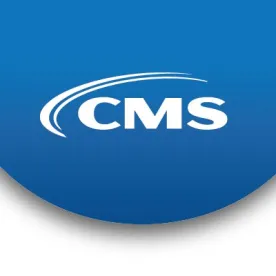In November 2020, the Centers for Medicare & Medicaid Services (CMS) and the Department of Health and Human Services Office of Inspector General (OIG) each issued long-awaited final rules that modernize and change the Stark Law and Anti-Kickback Statute (AKS) regulations, respectively. The final rules are generally effective on January 19, 2021. Although these rules are complex and extensive, they aim to assist providers to transition to value-based care by providing greater flexibility and clarity around participation in value-based and coordinated care arrangements. According to CMS and OIG, the additional flexibility in the Stark Law and the AKS does not diminish the laws’ ability to safeguard against government health care program abuses nor does it diminish CMS’ and OIG’s ability to use its enforcement powers to punish such abuses.
We provide a brief overview of some of the final rules’ major changes to the Stark Law and the AKS below and will provide a series of client alerts with additional and more in-depth analysis of these and other changes over the next few weeks.
New Value-Based Exceptions and Safe Harbors
In recognition of the shift away from fee-for-service and toward value-based healthcare, CMS and the OIG have created new, permanent exceptions and safe harbors to the Stark Law and the AKS specifically for value-based arrangements. CMS and the OIG acknowledge that the Stark Law and the AKS historically have discouraged providers from “entering into innovative arrangements that would improve quality outcomes, produce health care efficiencies, and lower costs.” As a result, the agencies have crafted these new exceptions and safe harbors to address this problem and encourage providers to “design and enter into value-based arrangements” without the “fear that” such activities will violate the Stark Law and the AKS.
The exceptions and safe harbors vary according to the degree of financial risk involved in the value-based arrangement (i.e., the higher the degree of financial risk, the less the regulatory requirements). The exceptions and safe harbors are for: (1) value-based arrangements that involve the parties’ full assumption of financial risk, (2) value-based arrangements that involve the parties’ assumption of meaningful financial risk; and (3) care coordination arrangements that do not carry financial risk, but will improve quality health outcomes and efficiency.
Applicability of the new exceptions and safe harbors will revolve around several key definitions (and documentation to establish satisfaction of those definitions), including:
-
Value-based activity – any of the following activities, provided that the activity is reasonably designed to achieve at least one value-based purpose of the value-based enterprise: (1) the provision of an item or service; (2) the taking of an action; or (3) the refraining from taking an action.
-
Value-based arrangement – an arrangement for the provision of at least one value-based activity for a target patient population to which the only parties are: (1) the value-based enterprise (“VBE”) and one or more of its VBE participants; or (2) VBE participants in the same value-based enterprise.
-
Value-based enterprise – two or more VBE participants: (1) that collaborate to achieve at least one value-based purpose; (2) each of which is a party to a value-based arrangement with the other or at least one other VBE participants in the value-based enterprise; (3) that have an accountable body or person responsible for the financial and operational oversight of the value-based enterprise; and (4) that have a governing document that describes the value-based enterprise and how the VBE participants intend to achieve its value-based purpose(s).
-
Value-based purpose – any of the following: (1) coordinating and managing the care of a target patient population; (2) improving the quality of care for a target patient population; (3) appropriately reducing the costs to, or growth in expenditures of payors without reducing the quality of care for a target patient population; or (4) transitioning from health care delivery and payment mechanisms based on the volume of items and services provided to mechanisms based on the quality of care and control of costs of care for a target patient population.
-
Full financial risk –the value‐based enterprise is financially responsible on a prospective basis for the cost of all patient care items and services covered by the applicable payor for each patient in the target patient population for a specified period of time.
-
“Meaningful downside financial risk” - the physician is responsible to repay or forgo no less than 10 percent of the total value of the remuneration the physician receives under the value-based arrangement.
New Stark Law Exceptions and Modifications
In addition to the exceptions discussed below, CMS instituted the following new Stark Law exceptions and modifications:
-
Limited Remuneration to a Physician: This new exception protects arrangements where a physician receives remuneration that does not exceed $5,000 per calendar year for items or services provided by a physician. The exception is aimed at giving providers additional flexibility in entering into arrangements under which a limited amount of remuneration is exchanged for a physician’s provision of items or services but the arrangement is unable to meet all of the requirements of any applicable Stark law exception.
-
Cybersecurity Technology and Related Services: This new exception protects the donation of nonmonetary remuneration consisting of technology and related services that are necessary and used predominantly to implement, maintain, or reestablish cybersecurity. Unlike the EHR exception, this exception does not require recipients to contribute to the cost of the donated cybersecurity technology or services.
-
Electronic Health Records Items and Services – CMS modified this exception to make it permanent. It also clarified that cybersecurity software and services are protected by this exception.
-
CMS clarified and modified a number of definition and interpretations, including, but not limited to, those briefly described below:
-
CMS refined the definition of “commercially reasonable” to mean that “the particular arrangement furthers a legitimate business purpose of the parties to the arrangement and is sensible, considering the characteristics of the parties, including their size, type, scope, and specialty.” CMS also clarified that an arrangement can be “commercially reasonable” even though it does not result in a profit for one or more of the parties.
-
CMS has established rules that define when compensation will be determined to take into account “volume or value” of referrals or take into account “other business generated” between the parties.
-
CMS clarified under what circumstances compensation will be considered to be “set in advance.”
-
CMS modified the definition of “fair market value” by segmenting the definition into a general definition, one that specifically applies to the rental of equipment and one that specifically applies to the rental of office space. Similarly, the definition of “general market value” is segmented into definitions that specifically apply to each of the purchase of assets, compensation, and the rental of equipment or office space.
-
New AKS Safe Harbors and Modifications
In addition to the new value-based safe harbors discussed above, the AKS final rule implements additional new safe harbors and modifies existing safe harbors. The new and modified safe harbors include:
-
Patient Engagement and Support: This new safe harbor protects the use of items, goods, and services furnished by a participant in a value-based enterprise to a patient in a target patient population.
-
CMS-Sponsored Models: This new harbor protects CMS-sponsored model arrangements and CMS-sponsored model patient incentives that would typically require OIG fraud and abuse waivers. This safe harbor reduces the need for separate OIG fraud and abuse waivers for new CMS-sponsored models.
-
Cybersecurity technology and services: Similar to the exception in the Stark Law, this safe harbor protects remuneration in the form of cybersecurity technology and services in an effort of facility improved cybersecurity in health care.
-
Electronic Health Records: This safe harbor has been modified to remove provisions regarding interoperability and to remove the prohibition on donation of equivalent technology. It also clarifies that included within this safe harbor are protections for cybersecurity technology and services included in an electronic health records arrangement. The safe harbor has also been made permanent by removing the sunset provision.
-
Personal Services and Management Contracts and Outcomes-Based Payments: The changes to the personal services and management services contracts safeharbor of the AKS now provide protection to certain payment structures that incorporate value-based care models. The OIG modified the previous safe harbor under the AKS by: (i) replacing the requirement for aggregate compensation to be set forth in advance by now requiring that the methodology for determining the compensation be set forth in advance; (ii) adding protections for certain outcomes-based and value-based arrangements; and (iii) increasing flexibility for part-time or sporadic arrangements and arrangements for which the aggregate compensation is not known in advance.
-
Warranties Safe harbor: This safe harbor has been revised to expand its protection to warranties for one or more items and related services (bundled warranties).
-
Local Transportation: This safe harbor has been modified to: (a) expand mileage limits for rural areas (from up to 50 miles to up to 75 miles); (ii) eliminate mileage limits for the transport of patients discharged from the hospital to their place or residence; and (iii) clarifies that this safe harbor also protects transportation through ride-sharing services.
-
ACO Beneficiary Incentives: This change has codified the statutory exception to the definition of “remuneration” at section 1128B(b)(3)(K) of the Bipartisan Budget Act of 2018 related to ACO Beneficiary Incentive programs for the Medicare Shared Savings Program.
Beneficiary Inducements CMP
The AKS final rule also codifies a new exception under the Beneficiary Inducement CMP. The statutory exception for telehealth technologies furnished to certain in-home dialysis patients, pursuant to section 50302(c) of the Bipartisan Budget Act of 2018 is now codified.
Conclusion
Based on the comments to the final rules to the AKS and the Stark Law, it appears that stakeholders generally welcome the modernizations and clarifications provided to these laws. The new and modified exceptions and safe harbors present providers with flexibility to be innovative in their provision of health care services to patients and their transition to value-based care. Womble Bond Dickinson’s health care team will continue to monitor the implementation of these final rules and looks forward to providing more in-depth analysis of different aspects of the final rules over the next several weeks.




 />i
/>i
